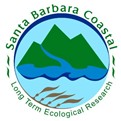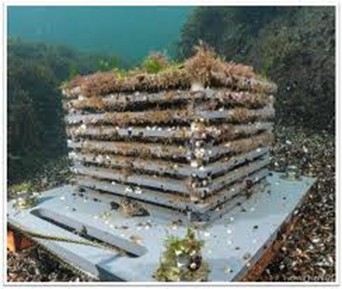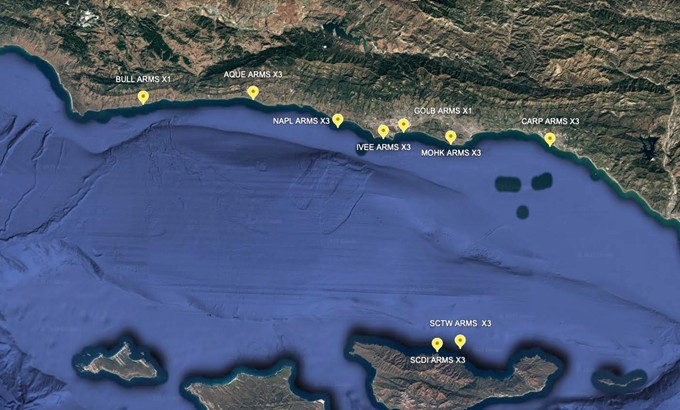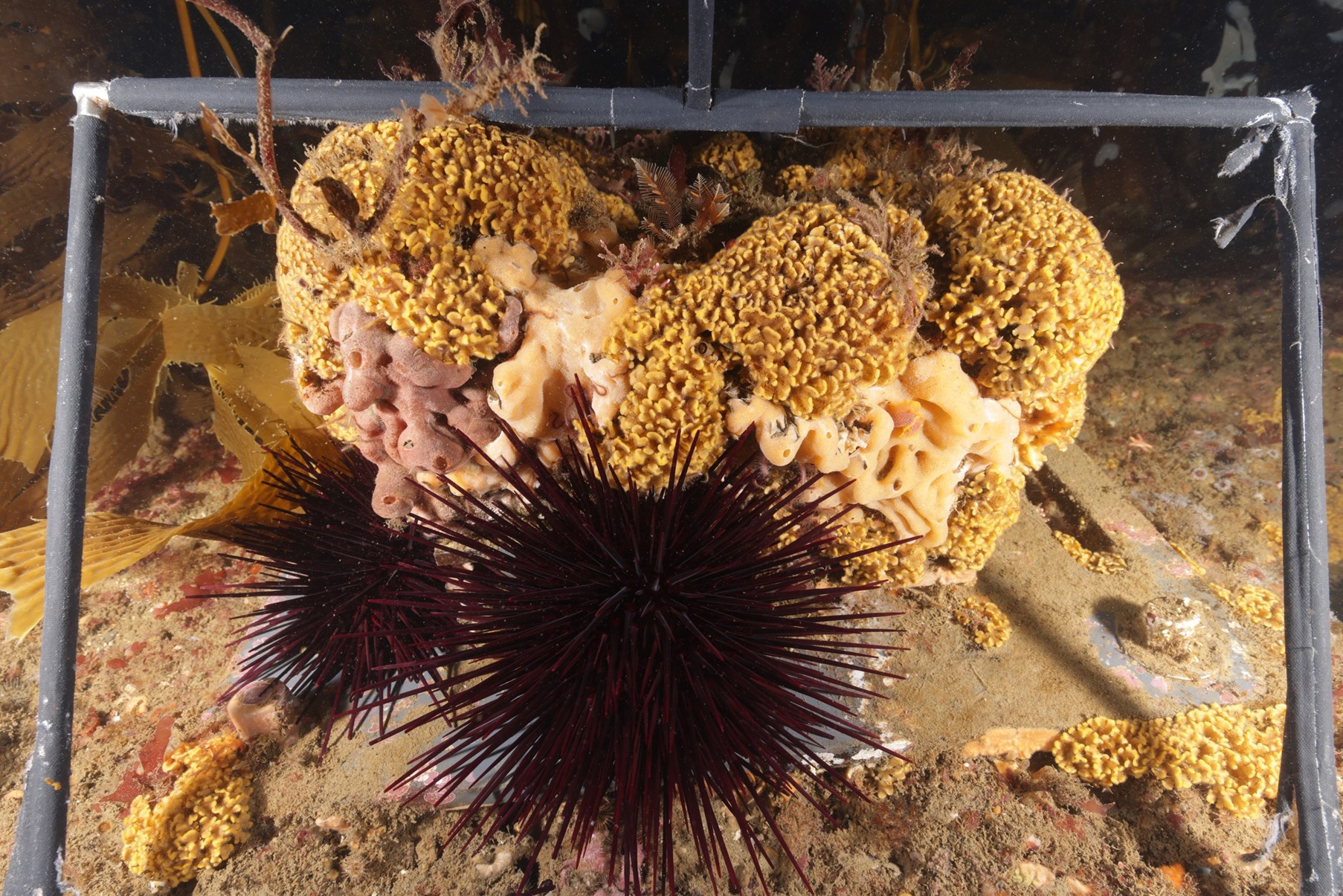Autonomous Reef Monitoring Structures (ARMS)


The Global ARMS (Autonomous Reef Monitoring Structures) Program, hosted by The Smithsonian National Museum, is a standardized marine biodiversity assessment used to monitor our changing oceans.

An Autonomous Reef Monitoring Structure (ARMS) Photo credit: https://marinebon.org/arms-mbon/
In 2022, the SBC MBON and the SBC LTER deployed ARMS at 9 locations within the Santa Barbara Channel to be retrieved in 2025.
ARMS are standardized 3D collectors of marine life used to census marine communities from around the globe. They are stacks of PVC plates that mimic the complex structure of the sea bottom that is hard to sample without destroying natural habitat. Around the world ARMS act as biological weather stations. ARMS recruit local species to provide a flavor of that particular region. This standard census allows researchers to compare one place to another or how one place changes over time, based on these ARMS communities.

Automated Reef Monitoring Structures (ARMS) have been deployed throughout the Santa Barbara Channel in kelp forests, rocky reefs, marine protected areas, and unprotected sites. By comparing ARMS across these varied environments, we aim to investigate how the presence of kelp and the reduction of human pressures—such as fishing—shape local benthic and epifaunal communities.We will also compare the epifaunal communities on ARMS to those found on natural kelp holdfasts to evaluate how artificial structures mimic or diverge from the ecological roles of natural habitat-forming species. This comparison will help us assess the impact of ARMS on species richness and diversity and distinguish between native and invasive species to determine whether artificial structures provide a foothold for invasive taxa.

All ARMS upon retrieval will be processed following the Smithsonian standardized ARMS protocol. Sessile and motile organisms on the ARMS are processed separately.
Motile Organism Processing
All motile organisms are sieved through different sieve sizes. For organisms greater than 2mm, they will be morpho sorted, photographed, and preserved for DNA barcoding. For organisms smaller than 2mm, they will be concentrated as bulk in a mesh, preserved and decanted for metabarcoding.
Sessile Organism Processing
Plates with sessile organisms will be photographed and subsampled. If possible, they will be identified and labeled prior to the photograph. All plates are then scraped and homogenized. They will then be preserved for metabarcoding.
For more protocol details see: https://naturalhistory.si.edu/research/global-arms-program/protocols
ARMS BioBlitz
To aid in identification of both motile and sessile organisms, the SCB MBON, the SBC LTER, the Miller Lab and the Crab Lab are co-hosting a Santa Barbara Channel ARMS Bioblitz.
For more information on the BioBlitz or if you are interested in participating / supporting see ARMS Bioblitz page
Acknowledgments
This work would not have been possible without the help and support from the SBC LTER, the Bureau of Ocean Energy Management, and the Santa Barbara Coastal Research Initiative funded by Brad Jones and Julie Black.